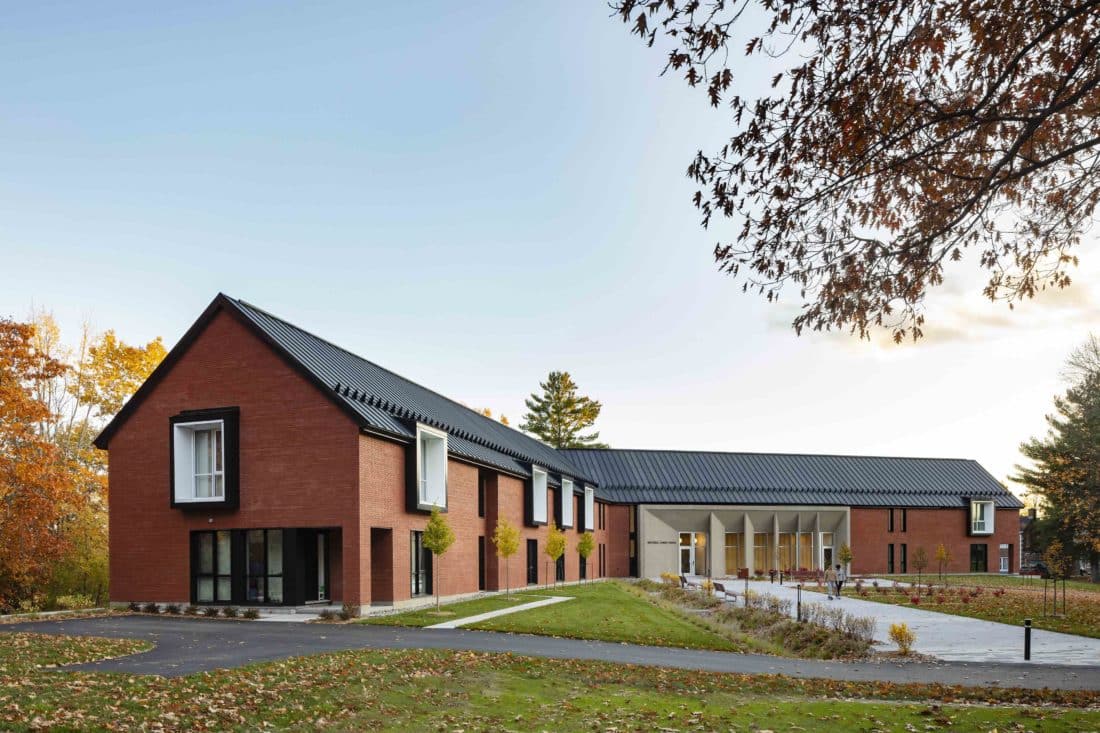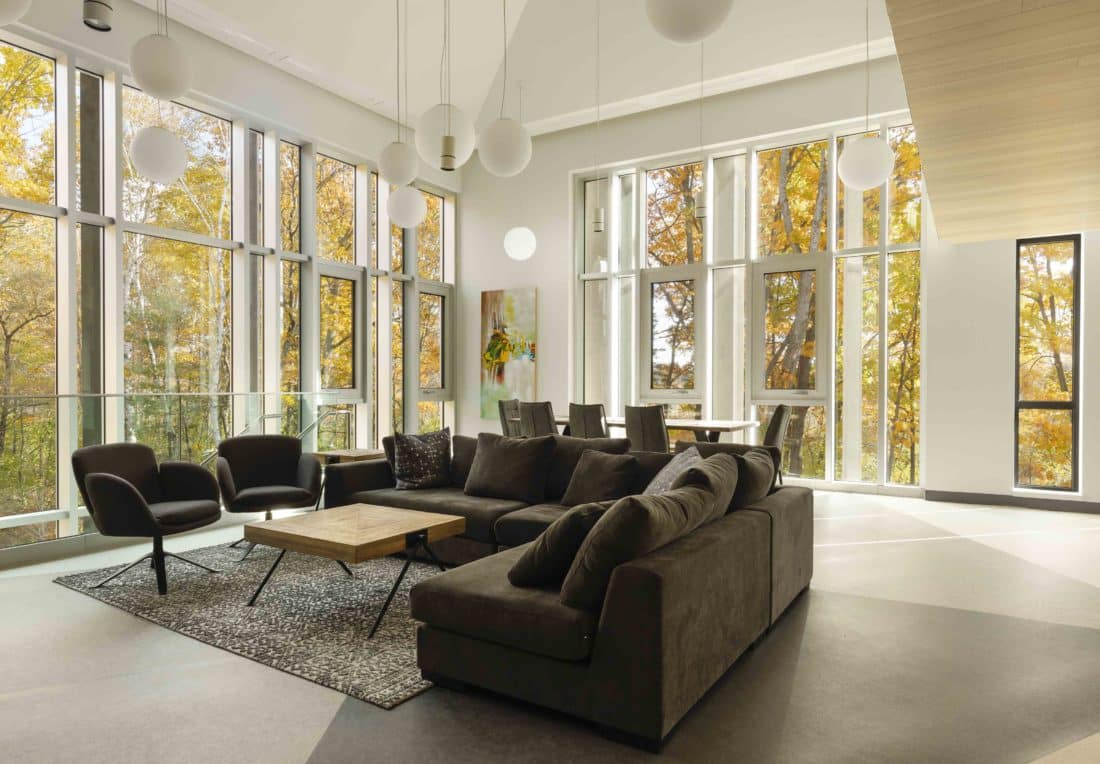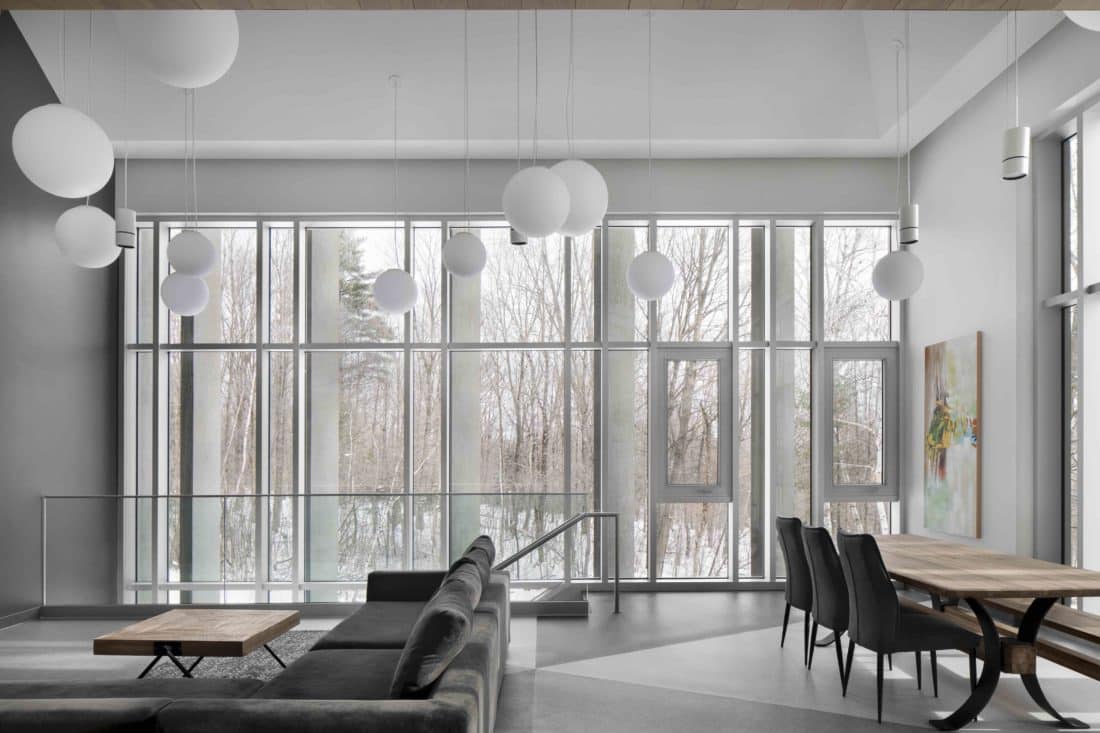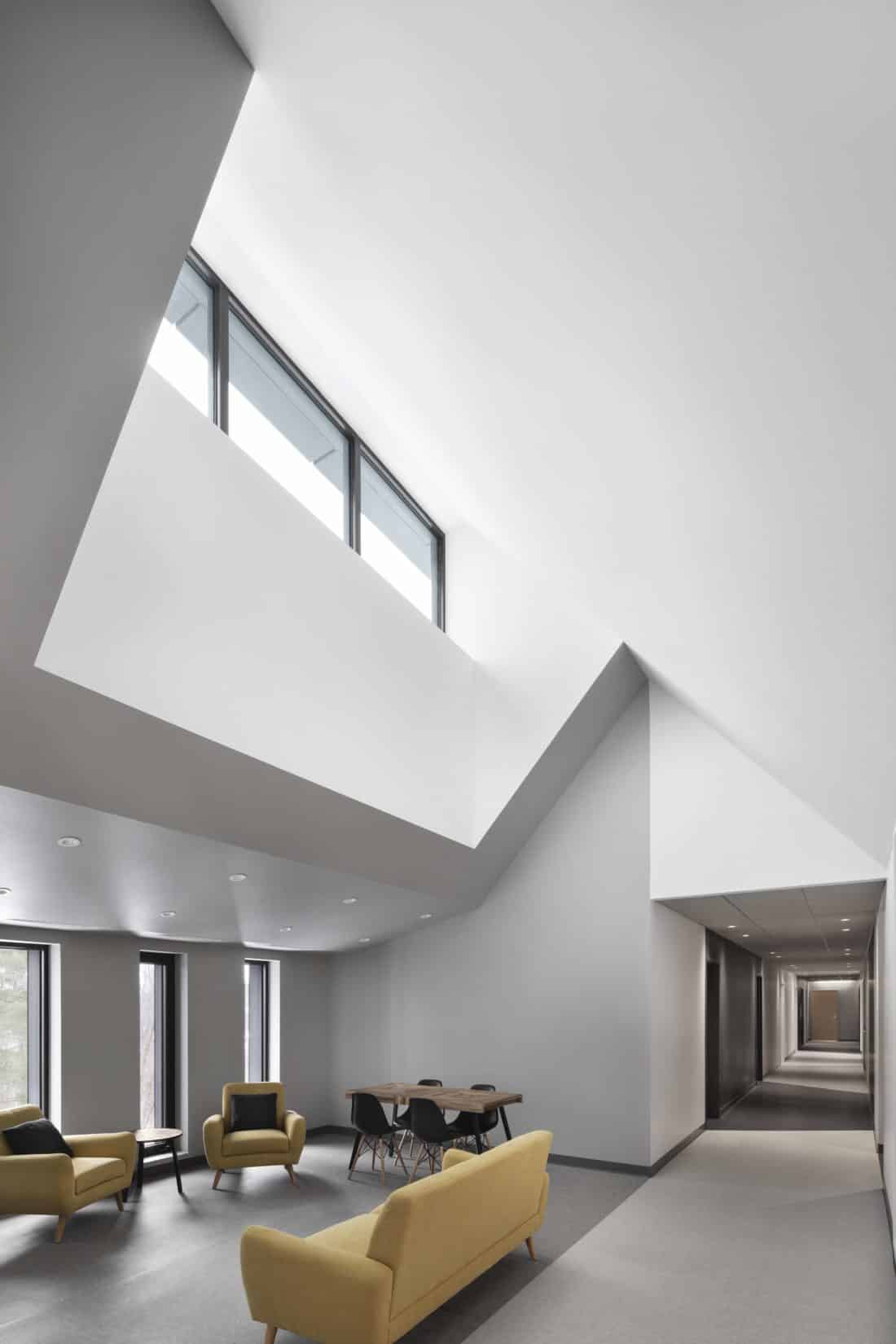 ARCHITEM Wolff Shapiro Kuskowski architects, a Montréal-based firm, is proud to unveil one of its most recent projects, an innovative residence for young students. Built for Bishop’s College School, this private boarding school provides a family-style environment for 270 students, age 12 to 17, coming from 37 different countries. Located near Sherbrooke, Québec, the century-old campus is set on a site of exceptional beauty, on the banks of the St. Francis River. The original buildings on this 250-acre campus are rooted in a long educational and architectural tradition.
ARCHITEM Wolff Shapiro Kuskowski architects, a Montréal-based firm, is proud to unveil one of its most recent projects, an innovative residence for young students. Built for Bishop’s College School, this private boarding school provides a family-style environment for 270 students, age 12 to 17, coming from 37 different countries. Located near Sherbrooke, Québec, the century-old campus is set on a site of exceptional beauty, on the banks of the St. Francis River. The original buildings on this 250-acre campus are rooted in a long educational and architectural tradition.
The construction of an eighth residence for students, the first to include both residential and academic components, was an unprecedented response to BCS’s interest in bringing together multiple aspects of the student experience. The new building, named Mitchell Family House, faces the existing campus while establishing a close connection to the surrounding forest and nearby river.
 Program
Program
The V-shaped residence is organised in two wings hinging on a common central core. There are 18 rooms, each shared by two students, on the upper two floors. All rooms are connected to central living spaces, which include a lounge and dining/kitchen area as well as a quieter study corner on a mezzanine.
Each wing ends in a two-storey apartment occupied by “house parents” and their respective families. Their main role is to ensure the well-being of a group of teens away from their family environment. Each of the two apartments communicates directly with the corridors leading to the residents’ rooms. Families access these apartments from a separate entrance away from the students’ entrance.
The carefully planned circulation was key to the implementation of the hybrid concept. The main challenge was to ensure the privacy and security of the young residents while greeting occasional visitors warmly. The entrance area provides two separate access points, one leading to the private residential wings and one to the public common areas.On the lowest level, dedicated to academic activities, one finds various multi-purpose spaces including a studio/office for a scholar-in-residence. The entire floor opens up to an outdoor agora connecting students and staff with the natural beauty that surrounds the building. Small-group events can also take place in this unique environment. Resembling a giant lantern, the common area’s central volume illuminates the exterior space at night.
 Materials
Materials
The mandate required that the building reflect its time yet be evocative of the existing campus’ architectural vocabulary, its scale, and its material palette. The architects opted for brick on all façades in a spirit of continuity, but also to celebrate the long brick-making tradition of the nearby town of Lennoxville. Wood was used on the interior to add warmth to both the public and private entrances, the stair volumes, and the social nodes.
The stone used on the campus heritage buildings was substituted by sculptural pre-cast concrete to give the new residence a contemporary signature. At the main entrance area, individually designed concrete fins signal the presence of the access points. Non-residents are directed towards the more public entrance, which fans out in the direction of the campus. The private entrance to the residential wings is treated in a more intimate way.
Sustainability issues
The architects’ intention was to reduce the building’s carbon footprint to a minimum. Highly efficient mechanical systems and triple glazed windows were among the means used as well as prefabricated wall panels insulated from the outside.
Landscaping
Particular attention was paid to water management on the site, especially given the building’s steep roof. As it reaches the ground, rainwater is channeled towards two retention basins to prevent water from reaching the natural woodland areas. Surface runoffs are also directed towards the basins in order to protect the riverbank from erosion.
Photo credit: Adrien Williams













